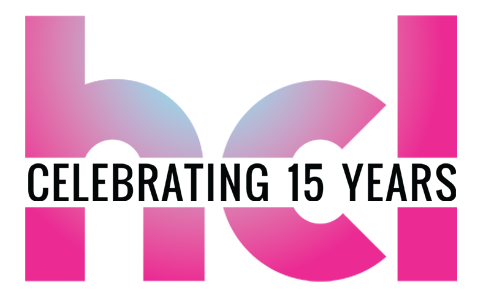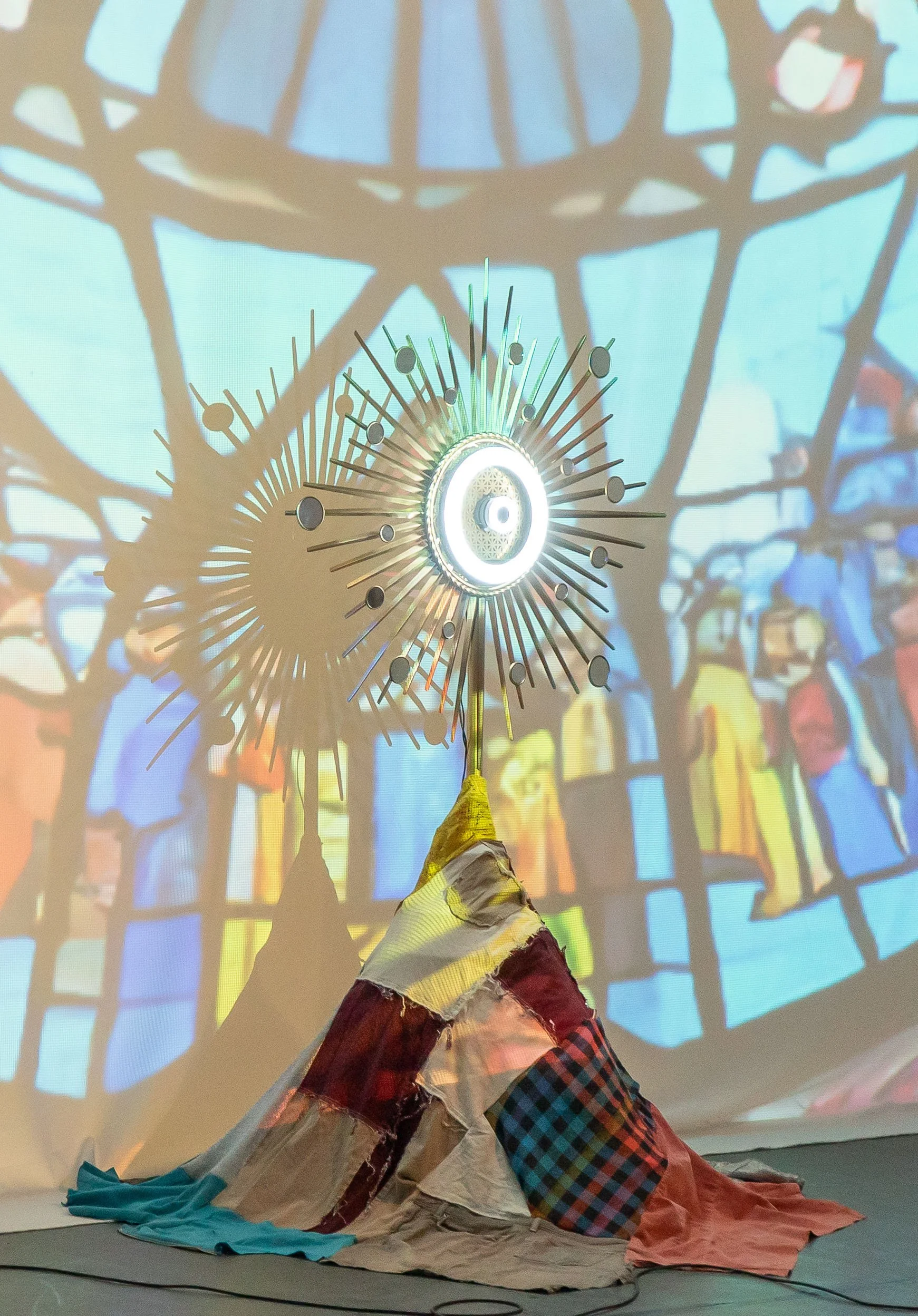HCL Interview Series: Christopher Knowlton
The HCL Artist Interview Series offers a behind-the-scenes look at the creative process, inspirations, and forthcoming projects of the artists within HCL’s residency programs.
Christopher Knowlton, 2025 HCL Fellow Artist in Residence, is a queer transdisciplinary movement artist and research scientist who uses emerging technologies to create augmented performance work. His artistic practice centers on how movement technologies like motion capture, wearable devices and biosensors can give insights to one’s self, each other, and the surrounding world.
Deus Ex Machina Doctrina at the 2025 Mana Spring Open Studios. Photo by Mikey Mosher.
High Concept Labs (HCL): In what ways does your work navigate the balance between concept, exploration, and execution?
Christopher Knowlton (CK): My work almost always begins from a conceptual place of intellectual curiosity. Recent questions have been: how could I dance on top of a record, and what does a record of dance look like? What if we could hear someone dance, and can we explore sound as touch at a distance? We now have generative artificial intelligence for text, images and video–but what is generative AI for movement, and could we prompt AI with our bodies?
To explore these questions, I experiment with emerging technologies that allow me to engage my intellectual curiosities through the moving body. This has looked like using motion capture to record dance and augmented reality to play it back on top of a spinning record; wearing biosensors to transform muscle tension and foot pressure data into sound to compose collectively in real-time; and using AI to hallucinate impossible choreographies. Exploring each of these ideas in these ways allows me to discover and play with the emergent aesthetics of each new media and ways the body can interact. I then try to execute my work in a way that gives people some inroads to interacting through movement and in doing so, try to create systems that choreograph while also granting some agency or autonomy in co-creating their experience.
Extended Play in NBS Puppet Cabaret at Links Hall, Photo by Evan Barr.
HCL: What place does experimentation and risk have in your practice?
CK: Working with tech in dance means I’m experimenting with form, presentation mode, co-creation and how audiences experience work. In that, there is always risk regarding how that work is received. However, I’m starting to shift my mindset to think about experimentation and risk as “play”. This has really helped me stay nimble and curious with all the elements I work with. I’ve even started calling the tools I use or build “toys”! I think art-making is an intentionally safe space for failure in our lives, a place where we can be imperfect, find dead ends, waste time. As a research scientist, I know all of that failure is actually incredibly productive, small little learnings that accumulate during the flow of play.
Deus Ex Machina Doctrina Open Lab at HCL, fall 2024.
HCL: How do you make use of time and space in your creative practice?
CK: My practice ping pongs between a number of different modes. One is certainly dance, movement and performance–moving my body in space and time in relation to other people and physical or digital objects. I also often find myself at a computer, adapting or collaging bits of code or hacking equipment to create interactive media that responds to movement. The third prong of my practice is physical object making; I always seem to find an excuse to build some prop or object or sculpture or costuming that mediates, houses, bridges or contextualizes the moving body and the digital media.
HCL: How do you see your work fitting into a broader creative ecosystem, and what role does collaboration play in your process?
CK: I constantly seek out community at this strange intersection of movement-based practice and emerging technology. I find community in dance and performance as well as new media, emerging forms of film, and even puppetry. Other times, I find myself drawn to museum-like installations or immersive educational or outreach experiences, trying to use concepts of kinesthetic learning to give people better insight to scientific concepts. I like to see my work bridging creative and academic research, using tools from each methodology to inform and innovate in the other. I always want to feel that I am pushing some boundary of what dance is allowed to be. Collaboration as a transdisciplinary artist often looks like skill sharing and resource exchange. When I invite people to share their practice as part of a collaborative project, I can’t help but get absorbed by their expertise and want to learn some small part of what they know!
HCL: Looking ahead, what artistic risks or experimental directions do you anticipate taking during the residency and how do you envision your work evolving?
CK: I think the choice to work with artificial intelligence and dance has been a risk in the project that I’m currently exploring during my residency at High Concept Labs. It’s such a polarizing topic that is top of mind in the zeitgeist, touching on issues of labor equity, resource extraction, tech oligarchs, propagation of misinformation, bodily autonomy, cultural identity, climate change and the unsettling sociopolitical threats to democracy we are currently experiencing in America. Those are very difficult topics to approach in a performance work, and ones that I have not tackled so directly in my previous work. I hope the use of satire and farce can help me create an experience that is simultaneously fun and self-critical, one that both implicates the audience and invites them to imagine a better future collectively.
Learn more about Christopher’s practice: https://www.chrisknowltondance.com/





